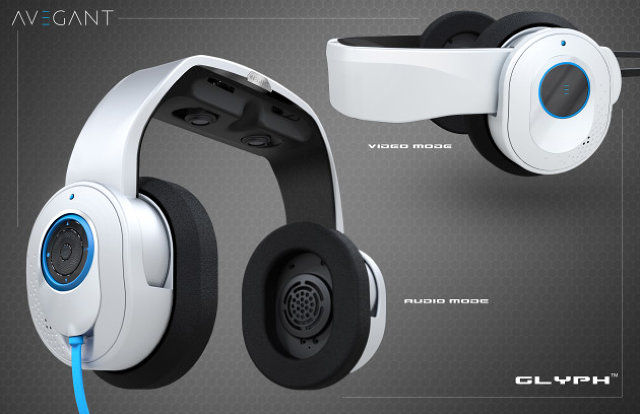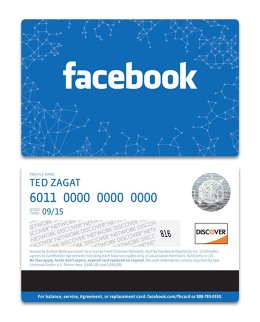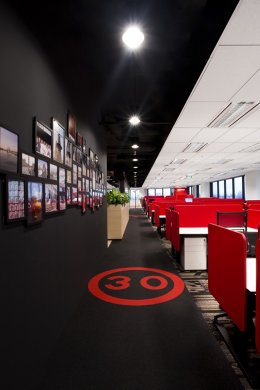We asked Co.Labs writers to describe the technology products they want, but which don't actually exist yet. There were flying cars and cancer vaccines in their Christmas lists, and a few playful oddities, but also less sci-fi requests like a U.S. high-speed rail network and a "real" Apple TV. Welcome to the Co.Labs Curiosity Shop.
Flying Chameleon Clothing
 Massimo Barbieri
Massimo Barbieri"Lady Gaga debuted the flying dress at Art Rave this year. This was the first time wearable tech didn't revolve around biosensors, quantification, and circuits. It was so much more. However, unfortunately, it was hideous. The whole idea of flying garments seems like a childhood dream combined with Harry Potter apparitions. We could get anywhere we wanted, fast and in style. The most efficient extension of ourselves, serving both form and function. Dear future, commercialize this and please make it easy on the eyes." - Natalia Rodriguez
"I want clothing that can change its own patterns and colors to suit my moods, controllable through a smartphone, or dictated by ambient light or sound settings--like a chameleon." - Chris Dannen
A "Real" Apple TV
 Tom Small
Tom Small"I'd like a real Apple TV, not just the little black box currently known as 'Apple TV.' So what's wrong with the current Apple solution? Three things: the software, the remotes, and the sound!
Here's a succinct summary of Professor Walrus's Apple TV:
- The TV is a dumb monitor--video only.
- The Apple TV Hub provides all device interfaces--video, audio, wifi--and it's an iOS device.
- Something like an iPod touch, built specifically for the Apple TV Hub, provides remote control.
- Bust up iTunes and include all new Apple TV software for the Hub. iTunes is reasonably efficient as an interface for purchasing media, but it's a terrible multi-media library. "
A Love Machine
 Camdiluv
Camdiluv"I want a gadget or piece of software which actually helps compatible people to find each other and fall in love, rather than administering various byzantine forms of social torture as today's dating apps do." - Ciara Byrne
"It's gonna be a wearable pheromone sensor" - Gabe Stein
A High-Speed Train Network
 Roger Wollstadt
Roger Wollstadt"I really want a good train system in the U.S. It's absurd that a country with such a large contiguous land mass has such shoddy railroads. The technology for bullet trains already exists. It's just a matter of the economics to deploy it." - Jay Cassano
A Mood Manager
 Twanda Baker
Twanda Baker"A biomedical device that recognizes when my mood is changing and alerts me to underlying causes such as hunger, sleep deprivation, hormone imbalances, etc. so that I take action to solve those problems instead of making rash decisions when I'm my least logical self. It should also be able to tell me when I'm at my peak cognitive performance and how likely that's likely to last so I get the most out of those windows of time." - Gabe Stein
Electronic Skins
 Jorge Gamaliel Frade Chávez
Jorge Gamaliel Frade Chávez"I want electronic skins. We'll use them to wrap vocal chords and brains, allowing sub-vocal communication (kind of like ESP) and better brain-machine interfaces for locked-in patients and mind-driven drones. I also vote for otogenetic brain plugs to turn on neurons with light, as a non-drug treatment for addiction, depression, Parkinson's, and other brain problems. Almost as good as Kid President's fix for global sadness." - Taylor Beck
Battle Robots
 See-ming Lee
See-ming Lee"I want battle robots. Or rather, I want robots that'll survive battles but are actually committed to, y'know, defending humans. We deploy robot rovers and the best thing we can think of is loading it up with a 7.62mm machine gun? I'm tickled that Google bought Boston Dynamics, makers of the admittedly terrifying Cheetahbot (along with the man-sized, terrain-conquering Atlas), but if the American military is going to focus on developing better death machines, I'll have to settle for Google's oversight to deploy these robo beasties into trouble zones. With these bots, we could secure civilians out of harm's way or send the bots into firefights with stun guns or tranqs." - David J. Lumb
An Everlasting Smartphone
 DaveonFlickr
DaveonFlickr"I want a smartphone that is waterproof, crushproof, flexible and low-power--not something I have to take great care of." - Chris Dannen
"Electronics that don't need to be charged. Ever. They just run on a battery system based on heat when we type into them or hold them." - Natalia Rodriguez
Animal Migration Aid
 Joris Goddijn
Joris Goddijn"Global warming and civilization has disrupted migration patterns. About 4,000 species are critically endangered. Our satellites are precise enough to observe a lot of the struggles these species go through when trying to "reroute" their patterns. It'd be awesome to have sensors in wildlife so that we could guide them in the right patterns. It'd be awesome to utilize satellites for something more than mass surveillance and instead turn them into a catalyst for global preservation." - Natalia Rodriguez
Asteroid Mining
 Dave Mathis
Dave Mathis"I want asteroid mining to happen. How would I benefit? Not sure. Just a general sense of living in the future, I guess." - Luke Dormehl

















































